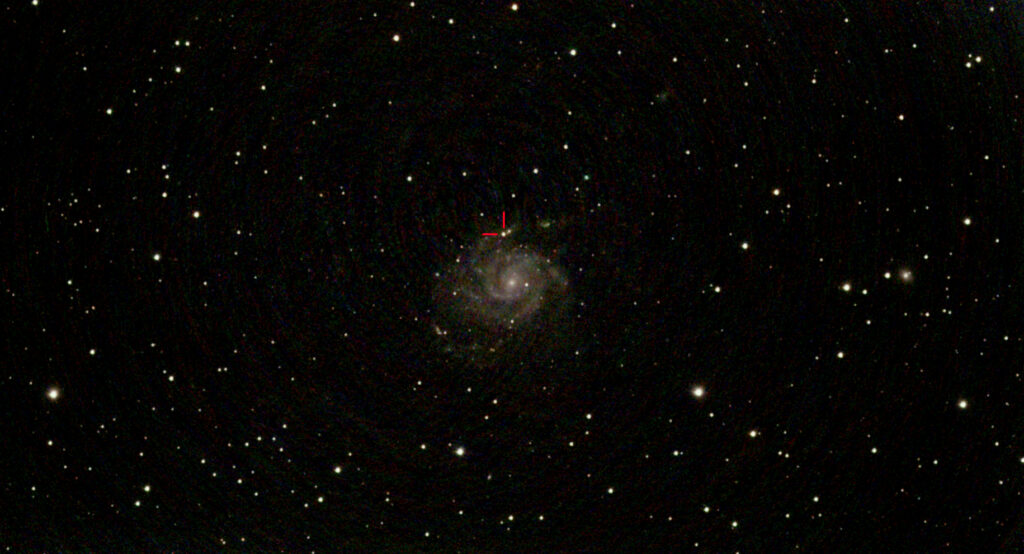
by Stuart Kurtz
I cannot escape the tension between religion and science. Some people can relieve this tension by embracing one and denying the other, but that’s not an option for me. Fortunately, our faith tradition shows that not all such tensions can or should be resolved, consider law and gospel, or faith and doubt. Like these, I believe the tension between religion and science can be productive.
Science can expand our sense of the scale of creation, and appreciate how the process contained within it allow for growth of complexity, the possibility of life and relationship with God. This brings me to the image at the top of this essay. I heard in late May that a supernova — the cataclysmic collapse of the core of a large star accompanied by the explosive throwing off of much of its mass — had been observed in the Pinwheel Galaxy, and was observable by amateur instruments. Supernovae are creative as well as destructive events, as elements heavier than iron, including those found in our bodies, were synthesized in supernovae that occurred billions of years ago. We are dust (as we confess on Ash Wednesday), true, but in the more specific words of the prophetess Joni Mitchell, we are stardust. Supernovae aren’t just amazing phenomenon that science allows us to understand. They are part of God’s plan for a creation that includes life.
The image above, which I captured Sunday evening using a small telescope, shows that supernova. Although it looks like many of the other stars in the image, that’s misleading. The foreground stars are mostly dozens and at most hundreds of light years away. The supernova, and the galaxy that contains it, is 24 million light years away. God works at scales and in ways that challenge our imagination.
